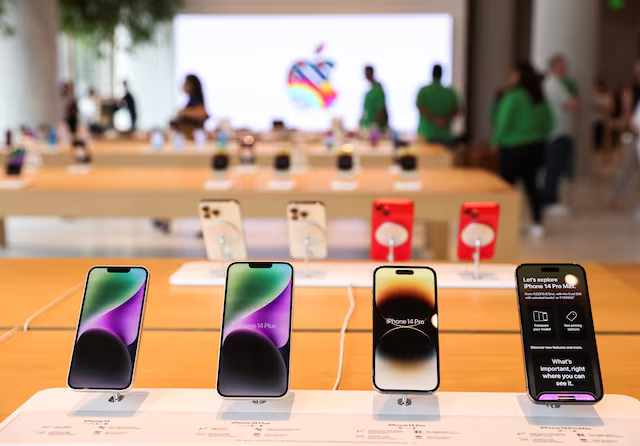In a significant move to strengthen India’s position as a global smartphone manufacturing hub, Finance Minister Nirmala Sitharaman announced the removal of import duties on certain essential components used in mobile phone production. The announcement, made during the annual budget on Saturday, is expected to bolster local production efforts and provide a competitive edge to leading tech giants such as Apple and Xiaomi.
India’s Rise as a Smartphone Manufacturing Powerhouse
Over the past six years, India’s electronics production has more than doubled, reaching an impressive $115 billion in 2024. The country now ranks as the world’s second-largest mobile phone manufacturer, a testament to the success of its ambitious ‘Make in India’ initiative. The latest tariff cuts align with the government’s broader strategy to attract global manufacturers and solidify India’s position in the global supply chain.
According to research firm Counterpoint, Apple emerged as the leader in India’s smartphone market in 2024, capturing a 23% share of total revenue, followed closely by Samsung at 22%. This growth trajectory underscores the increasing consumer demand and the shift toward premium smartphones in the Indian market.
Key Components Exempted from Import Duties
The list of exempted components includes printed circuit board assemblies, parts of camera modules, and USB cables, which were previously subject to a 2.5% import duty. The removal of these tariffs is expected to lower production costs, enhance domestic assembly capabilities, and make India a more attractive destination for smartphone manufacturers looking to set up or expand their operations.
Navigating Global Trade Uncertainties
This policy shift comes at a critical time as global trade faces potential disruptions. With former U.S. President Donald Trump advocating his “America First” policies and pushing for manufacturing to return to the U.S., India is strategically positioning itself to capitalize on the ongoing U.S.-China trade tensions. By reducing import duties, the Indian government aims to lure more global companies and increase its share in international smartphone exports.
Internally, India’s IT ministry had previously cautioned that high tariffs could put the country at a disadvantage against competitors like China and Vietnam. Reuters reported last year that unless India adjusted its tariff structures, it risked losing out in the race to become a leading smartphone exporter. The new duty exemptions directly address these concerns, ensuring India remains a preferred destination for global smartphone production.
Simplifying India’s Complex Tariff Structure
Last year, Sitharaman announced a comprehensive review of India’s customs duty framework to simplify tariffs and remove inefficiencies that hinder trade. One of the key focuses of this review was addressing the issue of inverted duty structures—where import duties on raw materials or intermediate goods are higher than on the finished products. This anomaly has long been cited as a major deterrent to efficient local manufacturing and a source of disputes among industry players.
By eliminating such inconsistencies, the government aims to create a more business-friendly environment that fosters growth, innovation, and increased investment in domestic manufacturing. The revised tariff structure is expected to streamline supply chains, reduce costs for manufacturers, and ultimately benefit consumers by making smartphones more affordable.
The Road Ahead for India’s Smartphone Industry
With India steadily emerging as a global electronics hub, these import duty cuts mark another crucial step toward achieving self-reliance in smartphone manufacturing. By creating a more favorable investment climate, the government is not only boosting domestic production but also reinforcing its commitment to positioning India as a key player in global technology supply chains.
For industry leaders like Apple and Xiaomi, the new policy presents an opportunity to expand their footprint in India, ramp up production, and cater to both the domestic and international markets more efficiently. As India continues to refine its trade policies and manufacturing ecosystem, the country is well on its way to becoming an indispensable part of the global smartphone production landscape.
The government’s proactive approach to easing trade barriers and incentivizing local manufacturing reaffirms India’s ambition to be a world leader in smartphone production. With these strategic measures, India is not just keeping pace with global trends—it is setting new benchmarks for the future of mobile manufacturing.










